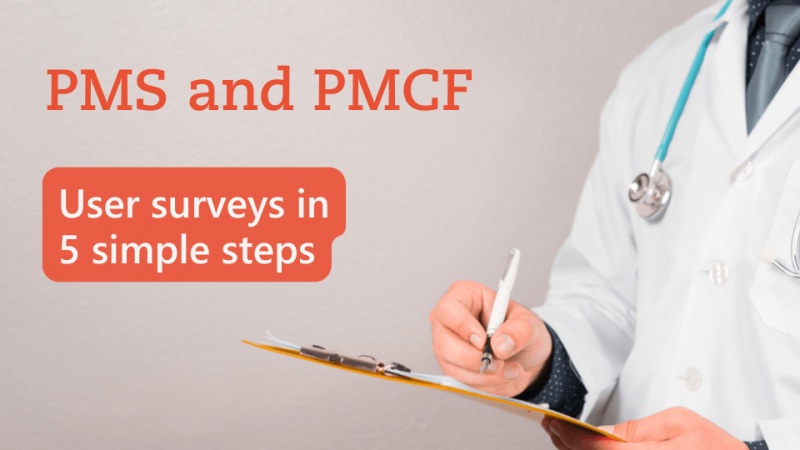Clinical Evaluation of Medical Devices: A guide for beginners
06/11/2023
Do you have any questions about the article or would you like to find out more about our services? We look forward to hearing from you!Make a non-binding enquiry now
The clinical evaluation of medical devices is a crucial step that plays a key role not only in market introduction but throughout the entire lifecycle of your products. Clinical evaluation serves as the interface between various elements of technical documentation and complies with various regulatory requirements and recommendations. For beginners, the complex nature of clinical evaluation can quickly become overwhelming. In the following article, we provide an overview of how to create a clinical evaluation to help you get started.Before get into the details of clinical evaluation, there are some essential points to clarify in advance:
Changes in these points after drafting the clinical evaluation can cause significant time and effort, especially in the transition from MDD to MDR – here, the relevant transitional provisions must be considered.
The GSPR define what needs to be examined in the clinical evaluation. They are critical in ensuring the safety and performance of your medical device. The product description should contain all essential information relevant to its application. This includes a general product description and information such as:
Approaching clinical evaluation is somewhat akin to a scientific publication. This means that clear structure and argumentation are of paramount importance. There are six different sections that should be included in every clinical evaluation:
Best Regards
 Dr. Nadine Weisert
Dr. Nadine Weisert
- Regulatory: Has the medical device been approved under the old Medical Devices Directive 93/42/EEC (MDD), has it already been adapted to the EU Medical Device Regulation (Medical Device Regulation (EU) 2017/745 (MDR)), or is it a new product?
- Format & Language: In what format and language (target market?) should the clinical evaluation be written?
- Scope: Which medical devices (single product or product group) should be included in the clinical evaluation?
- Technical Documentation: Is the underlying technical documentation complete and final?
Changes in these points after drafting the clinical evaluation can cause significant time and effort, especially in the transition from MDD to MDR – here, the relevant transitional provisions must be considered.
The clinical evaluation plan (CEP): a guide for your clinical evaluation
Clinical evaluation begins with the Clinical Evaluation Plan (CEP), setting the framework. The key components that must be considered in every CEP include the General Safety and Performance Requirements (GSPR), product description, and methods for product assessment.The GSPR define what needs to be examined in the clinical evaluation. They are critical in ensuring the safety and performance of your medical device. The product description should contain all essential information relevant to its application. This includes a general product description and information such as:
- Clinical benefit,
- Indications,
- Intended users.
The clinical evaluation report (CER): the clinical evaluation
The Clinical Evaluation Report (CER) is the final document summarizing the clinical evaluation and presenting and analyzing all available data for your medical device. This report must be periodically updated, with the frequency determined based on the classification of the medical device.Approaching clinical evaluation is somewhat akin to a scientific publication. This means that clear structure and argumentation are of paramount importance. There are six different sections that should be included in every clinical evaluation:
1. Summary:
This section provides a brief overview of the main results and findings of the clinical evaluation, comparable to the "Abstract" of a scientific publication. This includes reasons for updates and changes made since the last Clinical Evaluation Report (CER).2. Product description:
The product description should be identical to that of the Clinical Evaluation Plan (CEP) – changes should be marked. This, together with the CEP, is similar to the Materials/Methods section of a scientific publication.The following section is the Results section, which is divided into "State of the Art" and "Medical Device Data" (including potential equivalent products).3. State of the art (SOTA):
This section presents available diagnostic and treatment methods that reflect current clinical practice. Data sources include literature on similar products, alternative treatment methods, and treatment guidelines. Results from the State of the Art (SOTA) thus serve as the "control group" for the medical device under evaluation in the clinical assessment.4. Medical device data:
In the next chapters, all relevant data on the product is presented. This section reflects the results of the "test group" of the clinical evaluation, i.e., the product under evaluation. The presentation of results is sorted by data sources, and it's important to neutrally report the results first.Manufacturer-generated data: This includes preclinical data, applied standards, manufacturer's clinical trials, and Post-Market Surveillance (PMS) / Post-Market Clinical Follow-up (PMCF) data, and risk management data.Published data: In this section, product data from literature databases or research in other public databases is presented. Depending on the type of medical device and evaluation strategy, this may include clinical and preclinical data.5. Analysis:
In this section, the collected data is interpreted, and the results are discussed – similar to the "Discussion" section in scientific publications. The data is sorted by themes to answer the questions arising from the GSPR. Importantly, this is not a summary of the results. The goal of the analysis is to support the key statements of the clinical evaluation using the data.6. Conclusion:
This is the section where the main messages of the clinical evaluation are summarized, similar to the "Conclusions" section in a scientific publication.After the conclusion, any necessary actions may be listed, and the date of the subsequent clinical evaluation is determined and justified.Conclusion
The clinical evaluation of medical devices is a complex process. With a structured approach, you ensure that the product complies with regulatory requirements and can be successfully placed or maintained on the market. Given the wealth of information that needs to be processed, it's essential to make the clinical evaluation easily understandable and follow a clear structure. All available clinical data should be presented, and concise, unambiguous sentences can help prevent misunderstandings. Clarity and transparency are crucial for good traceability of the clinical evaluation, making your work more manageable and facilitating collaboration with your Notified Body.Are you in the process of preparing the clinical evaluation of your medical device? Do you have questions about the structure? Or are you unsure about which aspects are relevant for the clinical evaluation? Our Clinical Affairs experts are here to assist you and answer your questions in a free initial consultation. We look forward to working with you to find suitable solutions.Best Regards
Our blog posts are researched and created with the utmost care, but are only snapshots of the regulations, which are constantly changing. We do not guarantee that older content is still current or meaningful. If you are not sure whether the article you have read on this page still corresponds to the current state of regulation, please contact us: we will quickly place your topic in the current context.

Medical Device Expert
Clinical Affairs & PMCF



